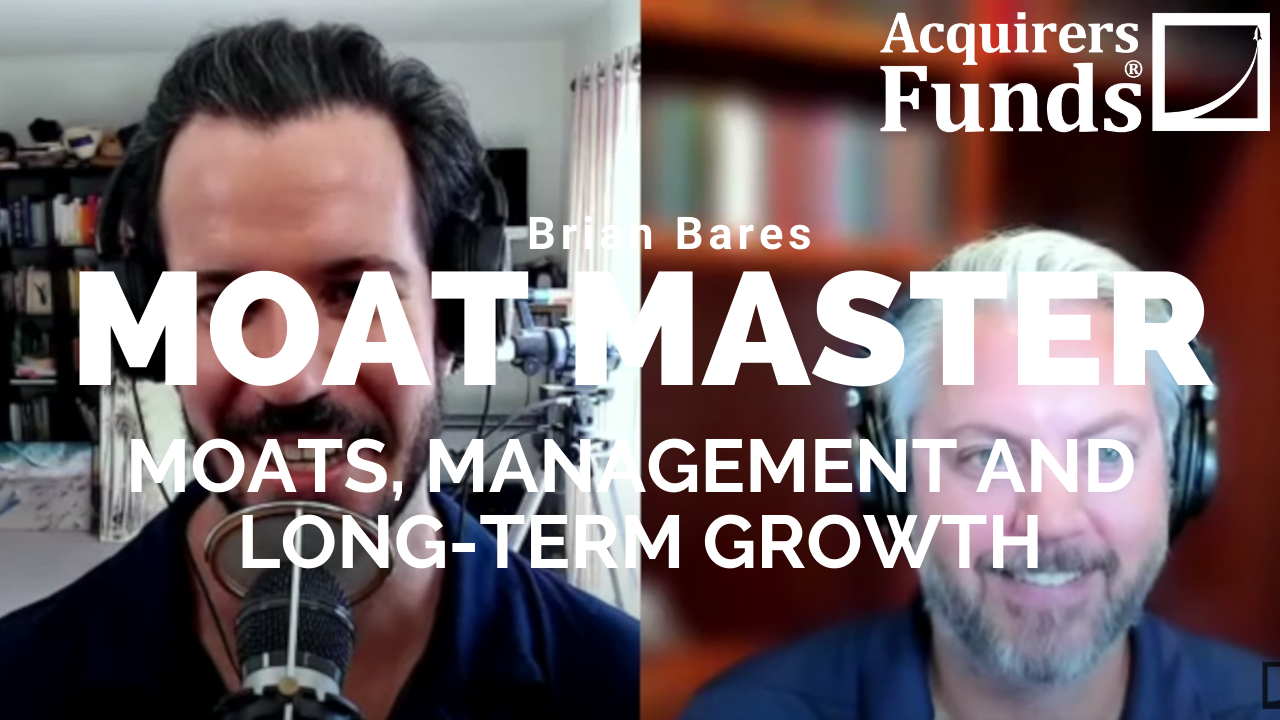During his recent interview with Tobias, Brian Bares, Founder of Bares Capital Management discussed his Variant Perception. Here’s an excerpt from the interview:
Brian: The landscape was moving. It was moving from this 60-40 stocks, bonds kind of implementation, to what is now known as the endowment model.
It was kind of popularized by the Yale Chief Investment Officer, David Swensen. He moved away from 60-40 and said, “Hey, anywhere I can get equity-like returns with little to no correlation to the US equity market, that’s what we want to do. And we are perpetual-time horizon non-taxable, so we have this advantage that we can press.” And so that was really the movement into hedge funds, into infrastructure, into real estate, these illiquid asset classes that could produce equity-like returns, but a smoother line up into the right.
And so, that’s a long way of saying, I saw that movement happening. I read Swensen’s book upon its publication in 2000. I recognized, “Aha, okay,” the public equity book is shrinking, but they’re ditching these hundred-stock 1% managers where the typical institution in the 80s had 10 to 15 investment managers in their public book, but they each had 100 stocks charging 1%. So, they’re basically paying active fees and getting passive results, which is bonkers, and everybody knew it.
I saw the world shifting to more concentrated, high active share managers that could be real alpha-driving exposures for the public book. Despite the fact there were less absolute dollars going to public equity, the large firms were getting fired, and Yale and others were starting to find firms like ours, where they were highly concentrated. And so, our strategies are 8 to 12 stocks.
So, very highly concentrated, high active share. But it works in a multi-manager context. If you have a handful of managers like us, you can have a perfectly diversified portfolio if you’re the overall tertiary institution. But you have a handful of high conviction, concentrated managers, that’s what you want, you want to focused on just their big swings of the bat that come over the middle of the plate in their process, and so that’s what we offer.
So, when I started the firm in June of 2000, I saw that that shift happening and said there’s an opportunity here to start a firm that could actually have a chance. 27 years old with a laptop, I could compete against all these larger firms because they’re getting fired and people are looking for these hedge fundy like boutiques in the long-only space. And in retrospect, that was the kind of one stroke of architectural genius in my story was that recognition. And here we are today, 20 years later and pretty much most large institutional allocators have adopted this endowment model and are looking for concentration in some capacity.
We’re still a lot more concentrated than most and we started actually in micro-cap. Micro-cap for us, I felt like would be the best chance for us to gain some kind of a variant perception in the names that we were studying against a lot of these large firms that had libraries of research on public companies. Because there still exists, and this was 20 years ago, still today, this vacuum of professional participation in micro-cap, especially in concentration because you can only deploy a little bit of capital in that space before you get too big.
So, what happens is you start in micro-cap, you put up some good numbers, and then you end up owning 50 names or 100 names, so you can accommodate a larger fee-paying asset base, or as we talked about you graduate up into large-cap. And so, we’ve made the accommodation and said we’re going to restrict the amount of money that we take in each of our strategies to stay sized appropriately for the space. So, in micro-cap, we’re still 8 to 12 names. And we closed at $130 million in contributed capital, and we’ve given money back for different times over our history to sort of stay sized in that space.
And then, for investors that like our process and want to grow with us, we’ve launched a small-cap strategy that is bounded by the Russell 2000. And then finally, we introduced in 2014, a mid large-cap strategy. So, as you might expect, the fees go down as you go up because it’s more professional, and it’s harder to produce the sort of alpha that everybody wants as you go up the chain, but we still feel like we have given ourselves qualitative research efforts a really good case for varying perception across the market cap spectrum.
And so, the key to our performance really is the qualitative aspects of the research, which we can obviously talk about, and the extreme concentration. We’ll have a couple 20% positions, if you’re in the teens, I mean, that’s very unusual for an institutional investment manager, because it’s really difficult when you’re wrong. You look really stupid for a while. But if you have a good batting average and a good process that would limit your potential to fall into some of these landmine names, if you get 60%, 65% batting average with a concentrated portfolio, your performance in the index can be pretty significant.
You can find out more about the VALUE: After Hours Podcast here – VALUE: After Hours Podcast. You can also listen to the podcast on your favorite podcast platforms here:
For all the latest news and podcasts, join our free newsletter here.
Don’t forget to check out our FREE Large Cap 1000 – Stock Screener, here at The Acquirer’s Multiple:





